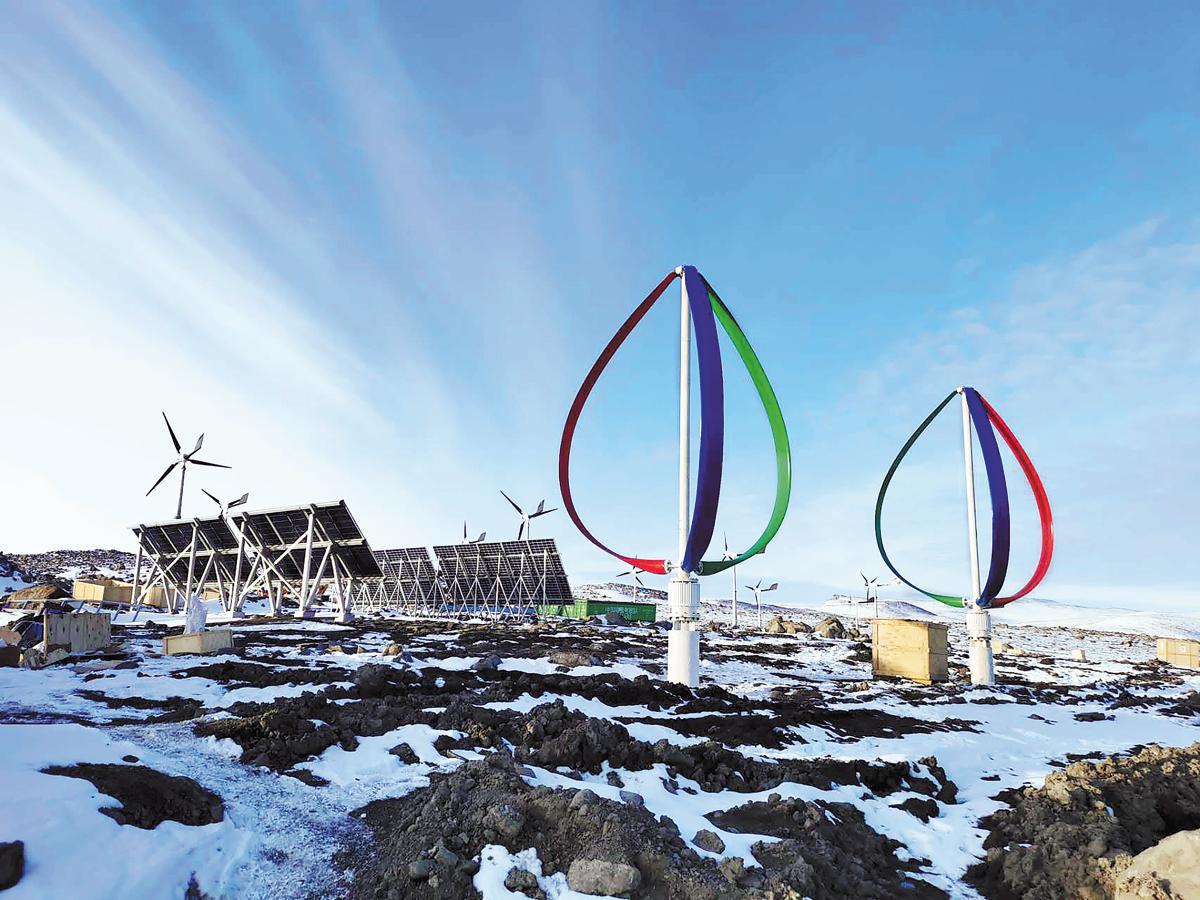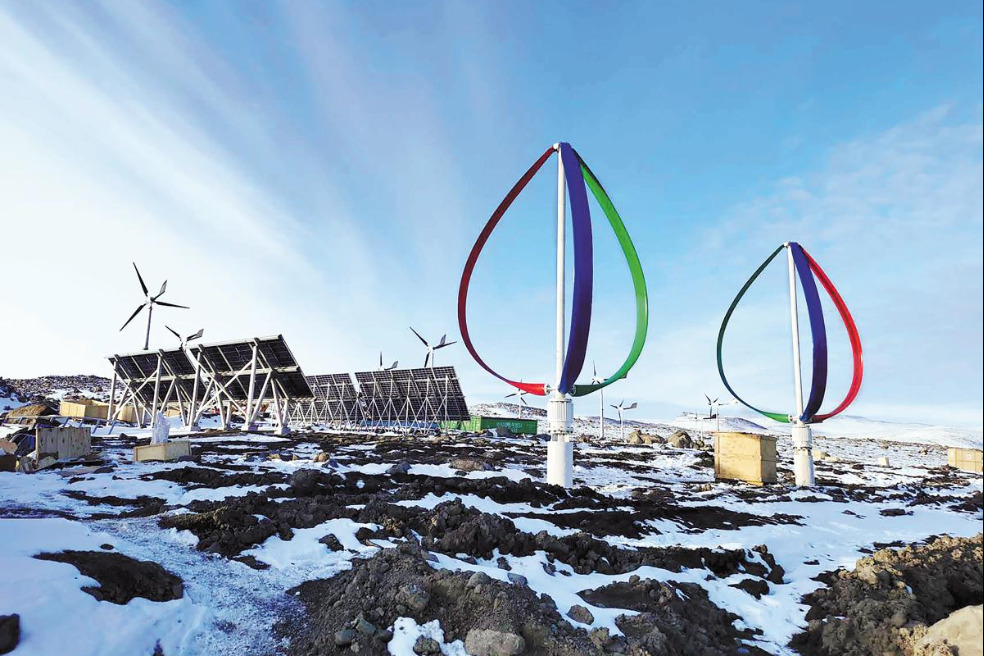China's Antarctic station powered by new energy
Nation's polar journey moves from diesel into renewable era


A clean energy system tailored for polar conditions has been put into operation in China's Qinling station in Antarctica.
The breakthrough means China has become the first country to achieve the large-scale operation of a clean energy system under extreme Antarctic conditions.
Lead scientist Sun Hongbin, 56, told China Daily that the project marks an achievement in China's green scientific exploration in the field of polar energy, and signifies that the nation's polar exploration has developed from the diesel era into a new era of green energy.
The system will generate a wealth of data, as well as present challenges that will prompt continuous research, said Sun, who is also the chief scientist on polar clean energy at the Polar Research Institute of China and president of Taiyuan University of Technology in Shanxi province.
Since the launch of the system on March 1, it has replaced traditional diesel power sources, providing uninterrupted zero-carbon power for the research equipment and essential living facilities at Qinling station, which was established in February last year as China's fifth Antarctic research station.
Photovoltaic and wind power account for 60 percent of the energy capacity of the system. In situations without wind or sunlight, stored hydrogen can provide power to the station, ensuring short-term operation for research equipment and basic living facilities.
Sun stressed the primary challenges in ensuring the reliability and safety of the equipment. For instance, the development of the droplet-shaped wind turbine capable of operating on ice caps and hydrogen fuel cells demands cold-resistant power-up technology.
Construction of the system at the station commenced in 2023.
As much of the equipment and facilities required specialized research and modification to adapt to the extreme conditions, Taiyuan University of Technology established a digital twin laboratory simulating the environment of Antarctica.
This laboratory possesses the capabilities to simulate nearly 10 extreme conditions, including extreme cold, strong winds, blizzards, polar day and night, intense geomagnetic fields, strong ultraviolet radiation, low pressure and low oxygen levels.
The primary purpose of establishing this laboratory was to address the challenges of research, testing and operation, Sun said.
"Once the equipment arrives in Antarctica, we have no means to procure a replacement if a single screw malfunctions," he said. "Before deployment to Antarctica, various new energy devices underwent testing here. Now the laboratory receives and analyzes real-time data transmitted back from Antarctica."
In recent years, various countries have explored approaches to develop clean energy in Antarctica, with solar and wind energy being the primary focus.
However, the extreme conditions and shortage of technologies make it tough for solar and wind power generation equipment to maintain stable and efficient operation.























